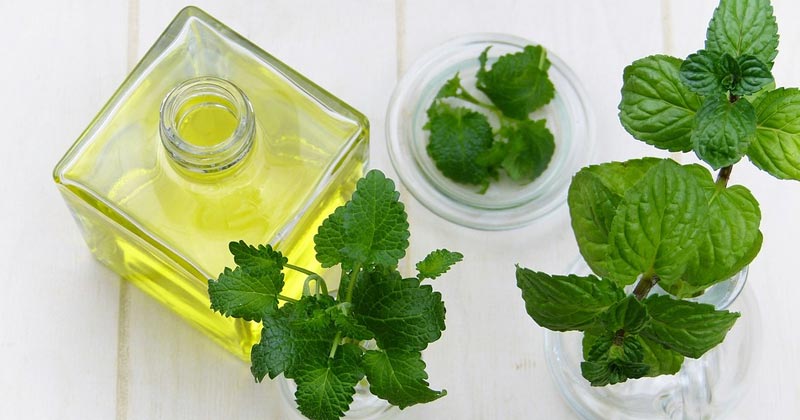Peppermint is a family herb with a strong flavor. It’s a hybrid of spearmint and watermint. It can be found throughout North America and Europe. It is extracted from the peppermint plant’s leaves, and the benefits of peppermint oil come in a variety of ways.
Some Peppermint oil uses to remember.
Peppermint oil uses come in handy in a very wide range, especially in traditional herbalism. Some of them are:
- Removing germs.
- The itching can be stopped.
- Ease pain, prevent/lessen vomiting, and aid in the elimination of mucous and muscle spasms.
- Increase sweating.
- Increasing blood circulation helps in the growth of Hair, which is a benefit of peppermint oil on Hair.
However, not all of these benefits of peppermint oil have been seen in humans.
What are Peppermint oil benefits that have the strongest scientific evidence behind them?
● Irritable bowel syndrome (IBS) symptoms are reduced:
The majority of benefits of peppermint oil studies focus on its effects on digestive issues, especially irritable bowel syndrome (IBS). According to the NCCIH Trusted Source, there is some evidence that enteric-coated diluted peppermint oil may help with IBS symptoms. Irritable bowel syndrome (IBS) is a chronic digestive disease characterized by stomach pain, constipation, or both. Enteric-coated peppermint capsules are widely recognized as a safe and effective treatment option for IBS pain, based on an extensive review of research from reputable sources over 50 years.
● Resolves indigestion
According to an analysis study published in the journal Alimentary Pharmacology and Therapeutics’ Trusted Source, a combination of enteric-coated peppermint oil and caraway oil helps in the reduction of dyspepsia in adults when compared to a placebo.
● Helps in reducing nausea
According to NCCIH Trusted Source, few studies in this area suggest that peppermint oil can help with nausea. Using a nebulizer to inhale peppermint oil mist reduced the onset, duration, and intensity of nausea and vomiting in people who had heart surgery. It’s just one of many benefits of peppermint oil.
Some other possible benefits of peppermint oil
Peppermint oil has shown positive results in some trials to aid with a variety of other issues, including:
● Viruses:
Peppermint has antiviral agents against viruses such as herpes simplex and influenza type A, according to a report published in 2020.

● Infections:
Peppermint oil has been proven to be antibacterial against a range of pathogens in laboratory research, including Salmonella, E. coli, and Staphylococcus aureus.
● Chronic itching:
According to a 2016 study, peppermint oil can be a safe and efficient treatment for chronic itching.
● Athletic performance:
According to a small 2014 study involving around 30 students, peppermint oil can improve many aspects of an athletic person, including jumping and grip strength. However, most of this research is limited or only shows peppermint oil benefits in labs. As a result, scientists are determined to conduct more research to determine if peppermint oil can be used to safely and successfully treat other human conditions.
What are the probable side effects of peppermint oil?
1. Heartburn, nausea, abdominal pain, and dry mouth are all possible peppermint oil side effects when taking it orally. Peppermint oil may cause bad reactions in certain people.
2. Peppermint oil capsules are frequently enteric-coated to reduce the risk of heartburn. It is one of the benefits of peppermint oil for the skin. If you use enteric-coated peppermint oil capsules with antacids, the coating may break down very quickly.
3. Irritations and rashes on the skin are possible side effects of using peppermint oil on the skin.
4. It should not be applied to the face of infants or young children since inhaling the menthol in the oil might produce dangerous and very negative side effects.
5. It’s unclear whether or not it is safe to take peppermint oil during pregnancy or breastfeeding.
6. Peppermint tea, derived from the leaves of the peppermint plant, appears to be safe. The long-term safety, however, is still unclear. Whether there will be any side effects of ingesting significant amounts of peppermint leaves is unknown.
Suggested Read – Benefits Of Hibiscus Oil And 5 Steps To Prepare Hibiscus Oil
What is the best way to make peppermint oil at home?
Here is a step by step guide on how to make peppermint oil at home:
1. In a glass with a tight lid, crush peppermint leaves.
2. Pour olive or grapeseed oil over the leaves. Close the jar and shake it for a good amount of time.
3. Keep it in the fridge for three days. Remove the leaves and dry them in a dish.
4. Fill the jar with fresh leaves, pour the oil back in, then top it up with more fresh oil. Fill it out until you’ve reached your target amount.
Before using the oil topically, deconcentrate it with a little amount of another oil — coconut or almond, for example — and for mouth cleaner, dilute it with water (1 cup for five to ten drops of oil). Never apply them to the skin directly. They can burn.


